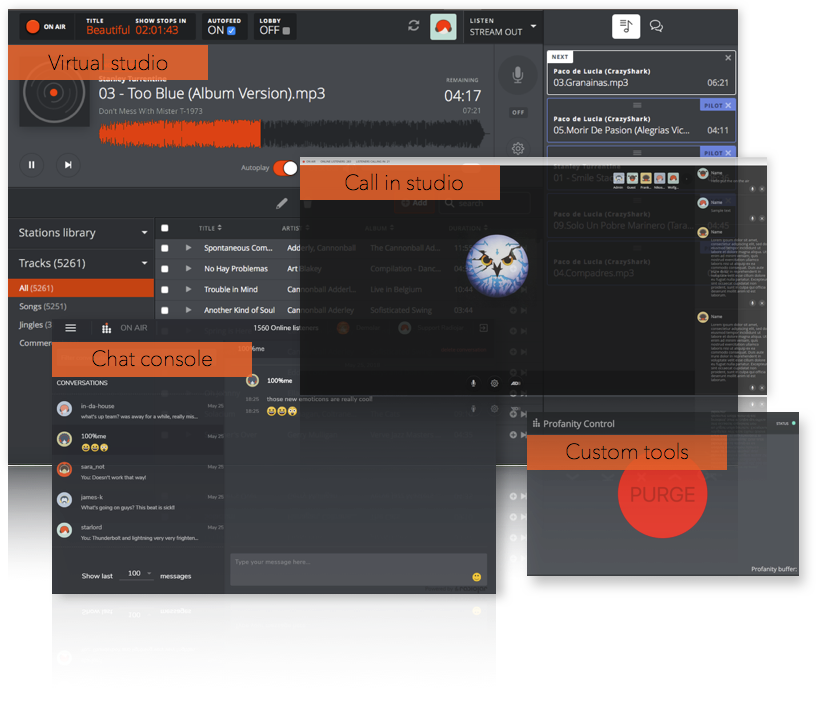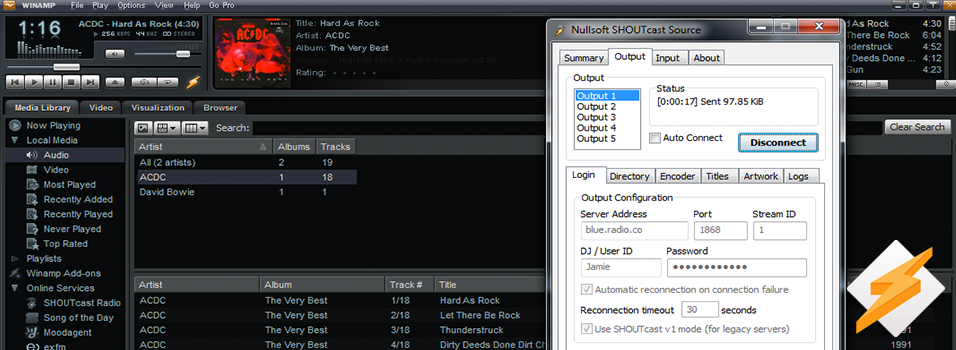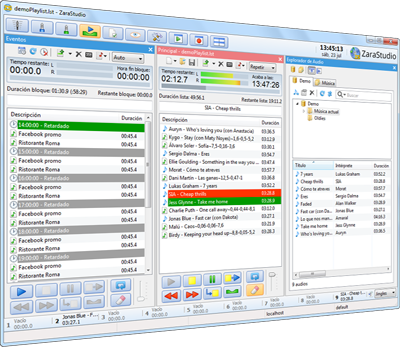
- Audio broadcasting software free software#
- Audio broadcasting software free Pc#
- Audio broadcasting software free free#
It gathers all your inputs and outputs, organizes them on a screen, and then encodes and streams the resulting video-basically it’s a one-stop shop for streaming software. OBS is relatively easy to use and offers all sorts of great options for customization.
Audio broadcasting software free free#
It’s a free program that handles streaming what’s on your computer to your service of choice, and it’s basically the standard for streaming software.
Audio broadcasting software free software#
If you actually are looking for something more public (and more versatile) Open Broadcaster Software (OBS) is your best bet. Maybe you’ve decided to play a game like Heavy Rain or Monkey Island, and your friends want to get in on solving puzzles and making story decisions-there’s no need to set up whole new software situation if it’s not strictly what you’re looking for. The voice and video chat service’s desktop app lets you stream games directly to a Discord server or call. If you’re interested in streaming as just a way to share an experience with your friends, rather than a wider audience on the internet, you can also skip most of this and just use Discord. Little changes like this can do a lot for getting rid of little audio problems like echos or rogue plosive and fricative sounds. If your computer desk is up against a wall, try putting some foam in the space behind your monitor. You can’t record under a blanket (unless you can fit a camera, computer and light under there too), so investing in some foam squares might be a good idea. Make sure your mic isn’t right in front of your mouth, or get a pop filter. When setting up your audio situation, you should be thinking about it similarly to how you’d feel about recording a podcast. You may need to invest in some acoustic treatment for your space, whether that means foam squares or something more intense. If your camera is pointed toward a window, you’re going to want some way to light your face, and it’ll probably be a good idea to close your blinds. Pay attention to the space you’ll be streaming from. In fact, some of these factors are even more important for streaming, as they’re some of the only ways you can meaningfully improve your audio and video quality. While the raw quality of your audio and video are capped, it’s still important to make all the same considerations as when setting up a more conventional recording space. Throwing some foam panels up on the walls near where you record will help kill echo. These days, even the cheaper microphones from Razer and HyperX will get the job done very well for under $60 USD. Even more moderately priced gaming headsets like the Razer BlackShark V2 and Turtle Beach Stealth 600 Gen 2 could get the job done, though a well-placed detached mic will always sound better-especially for people with very deep voices. However, you don’t need to spend a ton on a microphone. Picking up something from the Blue Yeti line, HyperX Quadcast, or the Elgato Wave:3 can handle just about anything you’ll need to do on a livestream. Additionally, it supports stereo and mono setups exclusively, so trying to build something more cinematic isn’t an option.īasically, any decent podcasting microphone will do great. Twitch doesn’t support audio bitrates higher than 160Kbps, and it recommends 96Kbps. Sites like Twitch place all sort of constraints on quality, especially when you’re just starting out, so a lot of the benefit of springing for something that costs hundreds of dollars and records absolutely pristine audio will be lost in the upload-it still might be nice if you plan to record your streams locally, though. First and foremost, you need a microphone. If you’re going to stream, there are some things you need to have. This is also how you’d set up a console for streaming (if it doesn’t already have streaming functions built in).
Audio broadcasting software free Pc#
However, if you’d rather offload the system strain of capturing gameplay as you run it, you could always get a capture card like the Elgato HD 60S and use it to connect your PC and laptop or another computer. Today we’re going to focus on doing it from a single computer, as that’s the simplest. If you’re only interested in streaming live video without gameplay, graphics card requirements are less of a factor.Īdditionally, there are a few ways to set up a stream. All told you’re probably looking for something relatively pricey.


You’ll also need a graphics card powerful enough to run whatever games you’re interested in streaming. If you’re intent on streaming video games on your PC, Twitch recommends having a computer with at least 8GB of RAM and an Intel i5 CPU.

Depending on what you want to do, you’ll need something on the beefier side. The line for what hardware you need to stream is a shifting one.

Editor’s note: This post was updated Jto link to our feature on acoustic treatment and soundproofing.


 0 kommentar(er)
0 kommentar(er)
